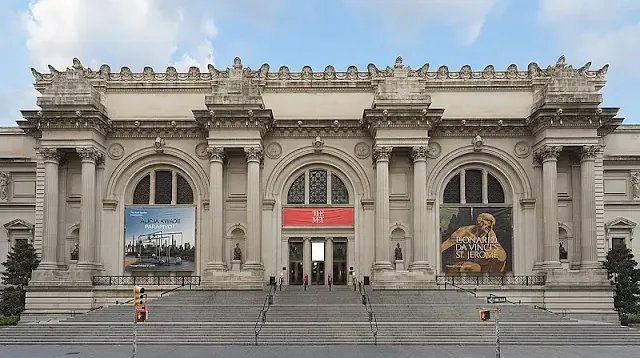The Metropolitan Museum of Art, commonly referred to as the Met, is one of the most renowned and influential art museums in the world. Located in New York City, the Met attracts millions of visitors each year with its vast collection spanning over 5,000 years of art history. The museum's mission is to collect, preserve, study, and exhibit artworks from diverse cultures and time periods, fostering appreciation and understanding of the artistic achievements of humanity.
The Met was founded in 1870 by a group of civic leaders, artists, and philanthropists who aimed to bring art and art education to the American public. Since its inception, the museum has undergone significant expansions and now encompasses several buildings, including its iconic main building on Fifth Avenue, known for its distinctive Beaux-Arts facade and grand entrance steps.
The museum's collection is unparalleled in its scope and diversity, with over two million works of art representing cultures from around the globe. Visitors can explore ancient Egyptian artifacts, classical Greek and Roman sculptures, medieval European paintings, Islamic art, Asian masterpieces, African and Oceanic art, American art, and contemporary works, among others. The Met's collection includes famous pieces such as Vincent van Gogh's "Self-Portrait with a Straw Hat," Johannes Vermeer's "Young Woman with a Water Pitcher," and Auguste Rodin's "The Thinker."
In addition to its permanent collection, the Met hosts a range of temporary exhibitions, showcasing specific artists, artistic movements, or thematic explorations. These exhibitions often feature loans from other museums and private collections, providing visitors with a unique opportunity to experience exceptional artworks that are rarely displayed together.
Apart from its role as a visual arts institution, the Met also offers educational programs, lectures, workshops, and performances for all ages. The museum's educational initiatives aim to engage and inspire visitors, encouraging them to deepen their understanding and appreciation of art's cultural and historical significance.
The Met's physical space is a masterpiece in itself, with its grand galleries, soaring ceilings, and stunning architectural details. It provides a contemplative and immersive environment for visitors to encounter art in its various forms. The museum's numerous wings and departments cater to different artistic disciplines, ensuring a comprehensive exploration of art history.
Beyond its physical presence, the Met has embraced digital innovation to extend its reach and impact. The museum's website offers virtual tours, online collections, educational resources, and interactive experiences, allowing individuals from around the world to engage with the Met's treasures remotely.
The Met has become an iconic cultural institution, influencing the art world and serving as a hub for artistic inspiration and research. Its contributions to art scholarship, conservation, and public engagement have solidified its position as a global leader in the museum field.
In conclusion, the Metropolitan Museum of Art, with its rich history, extensive collection, and commitment to education and accessibility, stands as a beacon of artistic excellence and cultural enrichment. Whether one is a seasoned art enthusiast or a curious novice, a visit to the Met promises an unforgettable journey through time and across continents, offering a profound appreciation for the beauty and significance of human creativity.



0 Comments